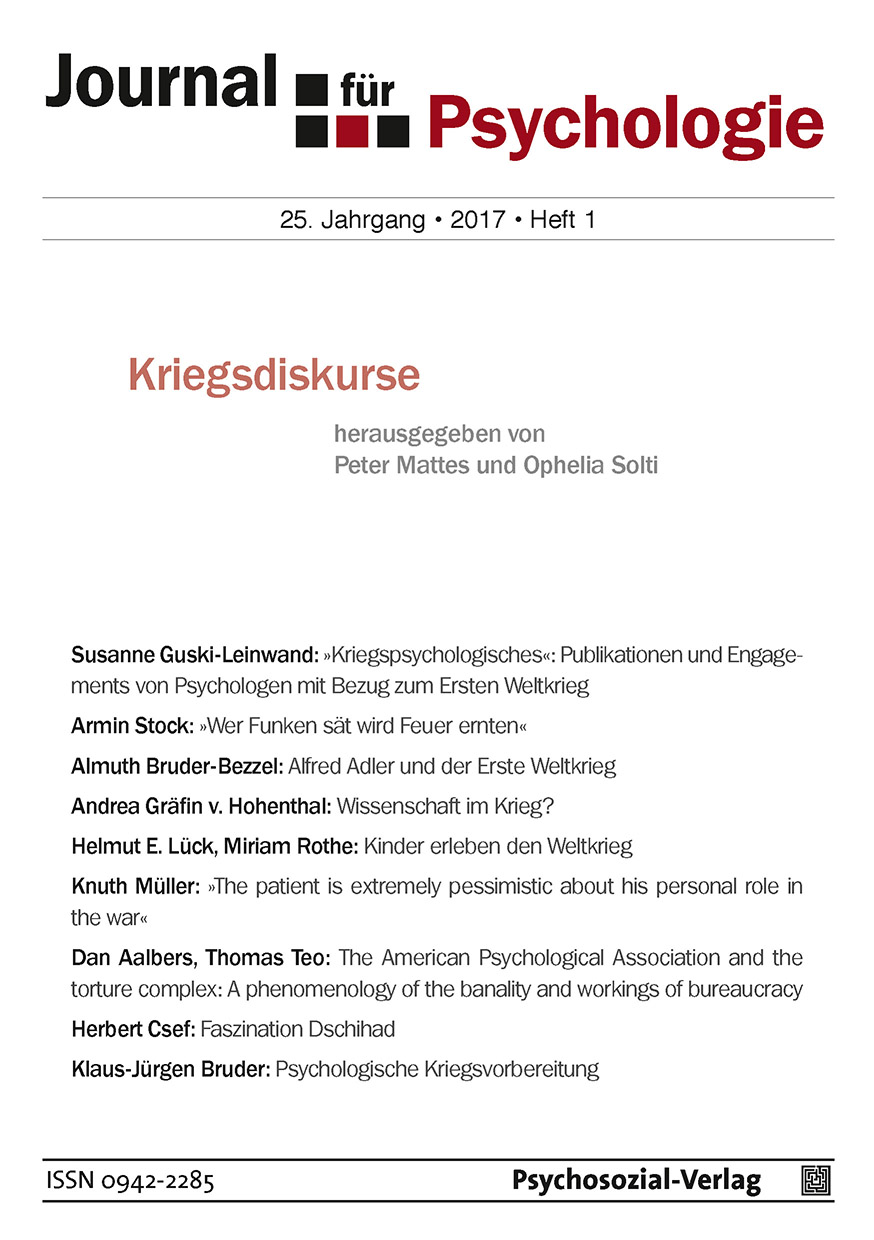Die American Psychological Association und der Folterkomplex: Eine Phänomenologie der Banalität und Techniken der Bürokratie
Abstract
In 2015 Attorney David Hoffman and his colleagues published the results of an extensive independent review in which he concluded that the American Psychological Association (APA) interacted with the Central Intelligence Agency (CIA) and colluded with the Pentagon in an effort to curry favor with these agencies and to protect and expand the role of psychologists in the interrogation programs of the CIA and Department of Defense (DoD). As part of this collusion, the APA’s bureaucracy took great efforts to ensure that its ethics policies did not conflict with the policies of the Pentagon – even doing so in defiance of the will of its membership. Many members of the APA greeted the revelations of the Hoffman report with shock. While psychologists should be dismayed by the revelations of the Hoffman report, we argue that anyone familiar with the history of American psychology’s entanglement with the national security state should not be surprised to learn that psychologists were designing and legitimizing torture. In order to understand the APA-DoD collusion we turn to the historical roots of the torture crisis and the structure and culture of the APA. We explore the roots of disciplined psychology’s role in collaboration with the security apparatus; analyze the institutional structures, ideological formations and cultural norms within the APA that have enabled this collusion; and investigate and challenge, from a phenomenological and theoretical point of view, one of the biggest scandals that American psychology has faced.Downloads
Veröffentlicht
05.04.2017
Zitationsvorschlag
Aalbers, Dan, und Thomas Teo. 2017. „Die American Psychological Association Und Der Folterkomplex: Eine Phänomenologie Der Banalität Und Techniken Der Bürokratie“. Journal für Psychologie 25 (1). https://journal-fuer-psychologie.de/article/view/429.
Ausgabe
Rubrik
Schwerpunkt
Lizenz
Diese Lizenz erlaubt die private Nutzung und unveränderte Weitergabe, verbietet jedoch die Bearbeitung und kommerzielle Nutzung. Weitere Informationen finden Sie unter: https://creativecommons.org/licenses/by-nc-nd/4.0/
Die Bedingungen der Creative-Commons-Lizenz gelten nur für Originalmaterial. Die Wiederverwendung von Material aus anderen Quellen (gekennzeichnet mit Quellenangabe) wie z. B. Schaubilder, Abbildungen, Fotos und Textauszüge erfordert ggf. weitere Nutzungsgenehmigungen durch den jeweiligen Rechteinhaber.



